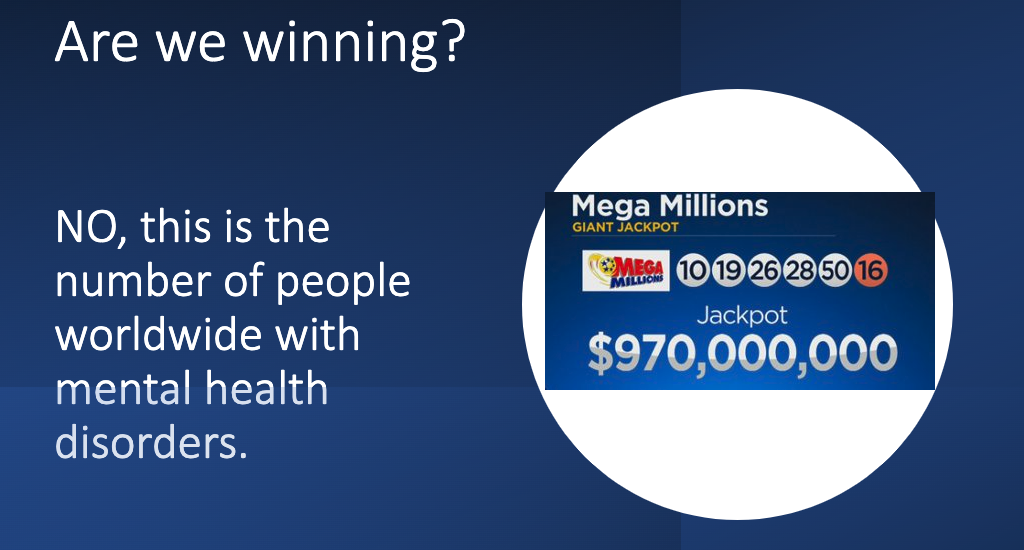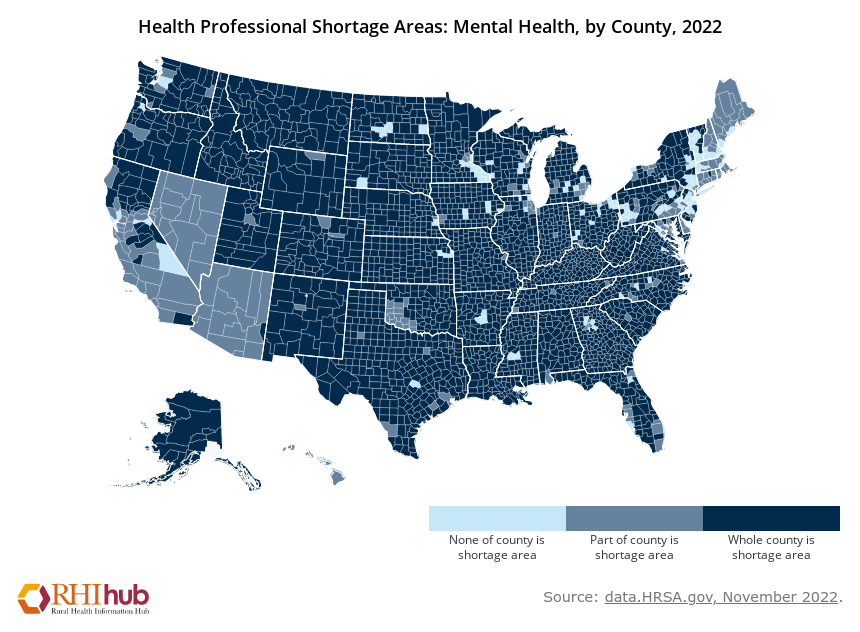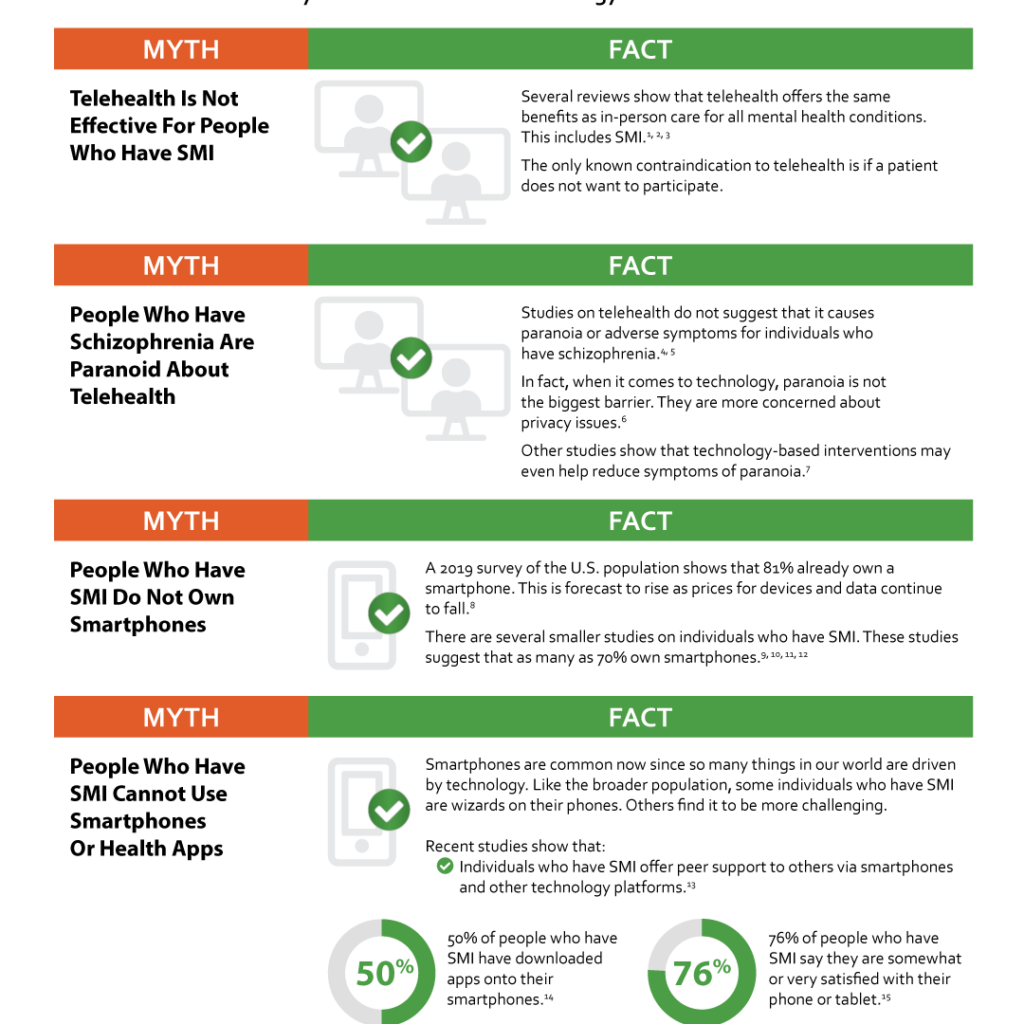Although it is mental health month, this is something that I reflect on daily in my work as a psychiatric nurse practitioner. It’s also the driving factor for me when spending time with clients and starting LFT Health where we work on creating digital solutions for healthcare. There is not health without mental health.
We are conducting research to make sure we are building the right thing for our customers. If you have 3 minutes, please help us by completing our survey.
Mental health needs are growing
The World Health Organization notes 13% of the world’s population has a mental health disorder, and calls it, “a mental health crisis”, and that was before the Covid-19 pandemic hit. That’s an estimated 970 million people globally living with a mental health disorder. In the United States, there is around 52.9 million people who suffer from mental health disorder, that’s about 21% of our population according to NAMI. In my home state of Indiana, there are about 1,125,000 adults with a mental health disorder, ranking a meager 43 out of 50 in Mental Health America’s ranking of adults with a mental health disorder and their ability to access care.

In the United States we have 1.2 million mental health providers. For our 52.9 million people with mental health disorders. Doesn’t seem like much of a gap? Well, it is. 150 million people in America live in what is called a federally designated mental health shortage area. These areas are often rural but include urban and suburban areas as well. It can take 7-11 years for someone to initiate contact with a mental health provider. Often, primary care is the first and only contact for someone who is having mental health issues.

Solving the mental health gap
What’s the solution? Well, like pretty much everything in life, it’s complex, and there is no simple solution. Just as every individual is unique, the solutions to help every individual reach mental health access are also unique to their situation. However, we can start by addressing some of the issues with the tools we have and enhancing them with the technology at our disposal.
Just like so many other areas of our modern life, technology has opened opportunities to address mental health care as well. The National Institute of Mental Health notes that the public, health care practitioners, and researchers have new access via smartphones, tablets, computers, and phones for help that was never available before. Many are now familiar with telemedicine since COVID. 76% of people in advanced economies and 45% in emerging economies have smartphone access. Even 70% of individuals with serious mental illness own smartphones.

All tech is not good tech
There are a lot of technological resources now to support mental health and like anything else, some are good, and some are not. Websites, tiktok, social media, youtube, and mobile apps are all teaming with mental health resources. Just like with anything else, it’s important to look at the source and content.
-
- Who is providing the content and/or application?
-
- Are they credible? Meaning, do they have the education, background and experience to say or provide the content and/or application?
-
- Who is funding them?
-
- What is their motivation?
-
- How much does it cost to access?
-
- What are the safety, security and privacy issues at stake for the end user?
-
- Is it “evidence-based”?
-
- Does it fit your needs as an individual?
Need more guidance?
Finally, if you are struggling. Go to an expert. This may mean starting with your primary care, or using an EAP if your workplace has one. There are community mental health centers that provide mental health assistance, as well as charity-based therapy services, look at local universities or colleges that have psychology/social work or other mental health services. They often have programs for their students to do clinical work while they learn on a free or sliding scale basis. The students are fresh and eager and have experienced clinicians backing them up. If you know the kind of therapy you want, search on databases like PsychologyToday.com.
If you have suicidal thoughts, or know someone who does, don’t wait. Call 988.
Advocate, be part of the solution
As our mental health needs grow throughout the world, don’t give up. Advocate! Advocate for yourself, your loved ones, and humanity. We have tools now to help, both digital and personal, and more are coming. Hope is a powerful intervention for mental health.
What have your experiences been with mental health digital technology? If you would like to share, take this brief survey to share your experiences. Click here!

Add a Comment